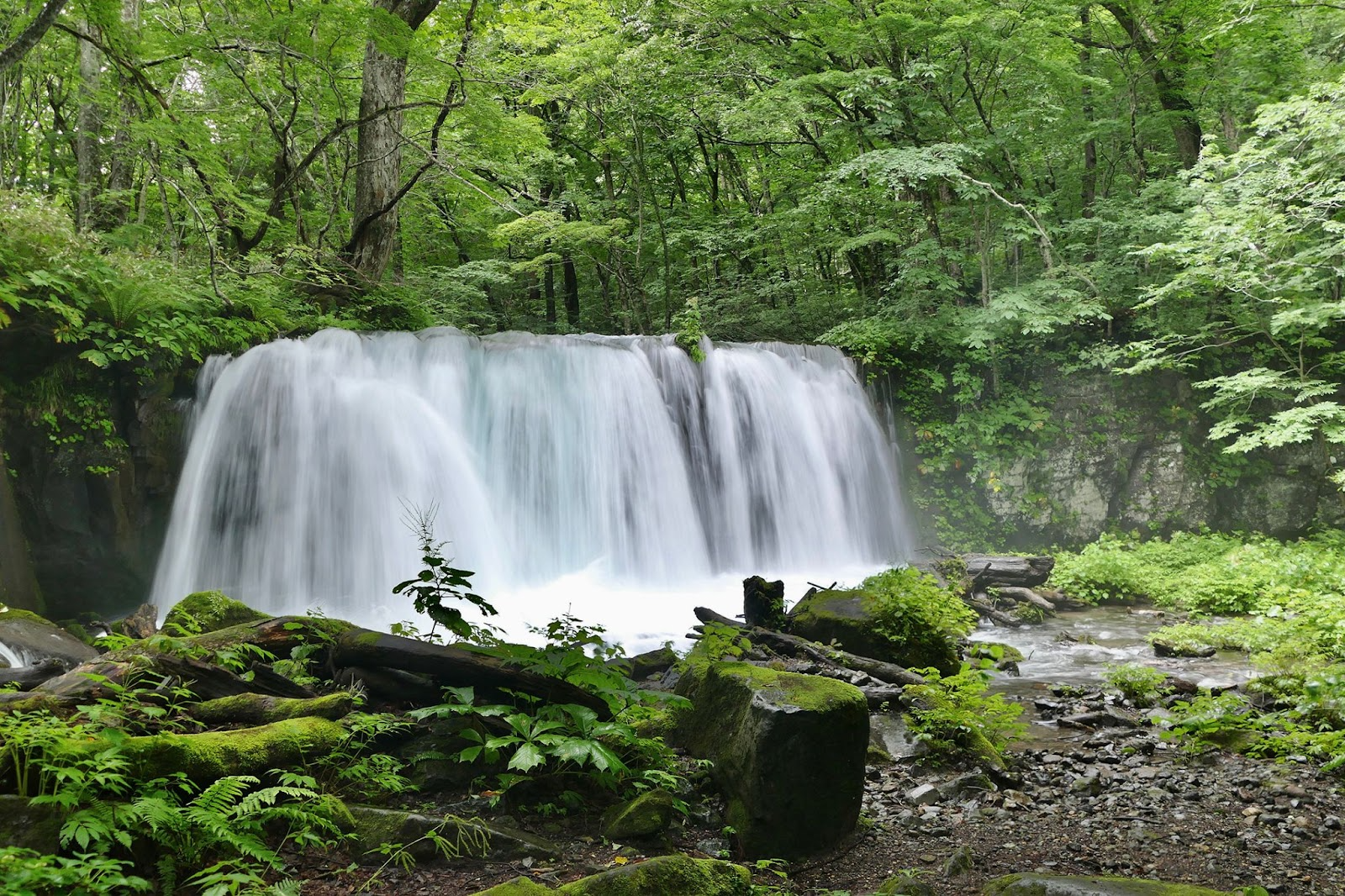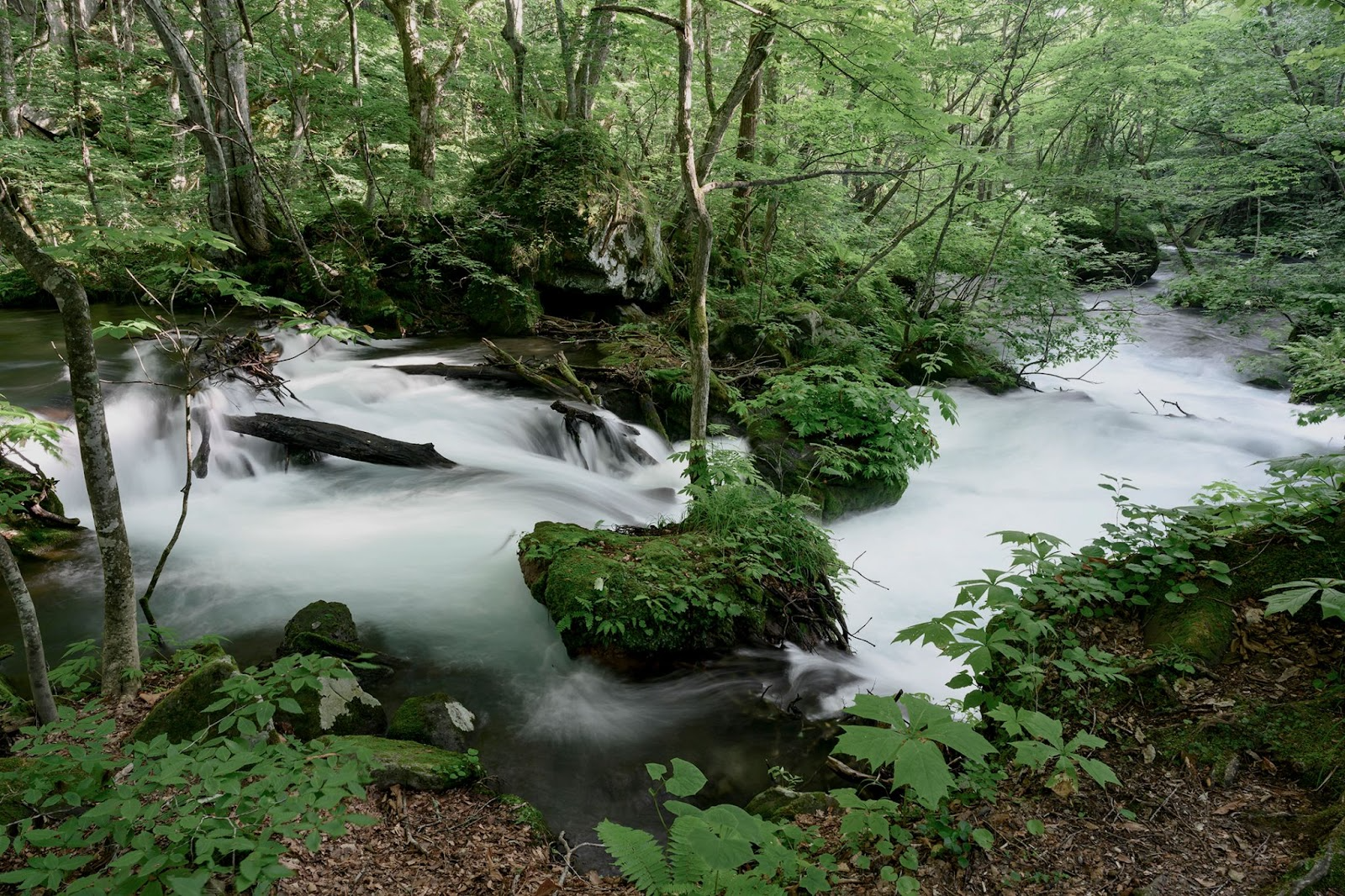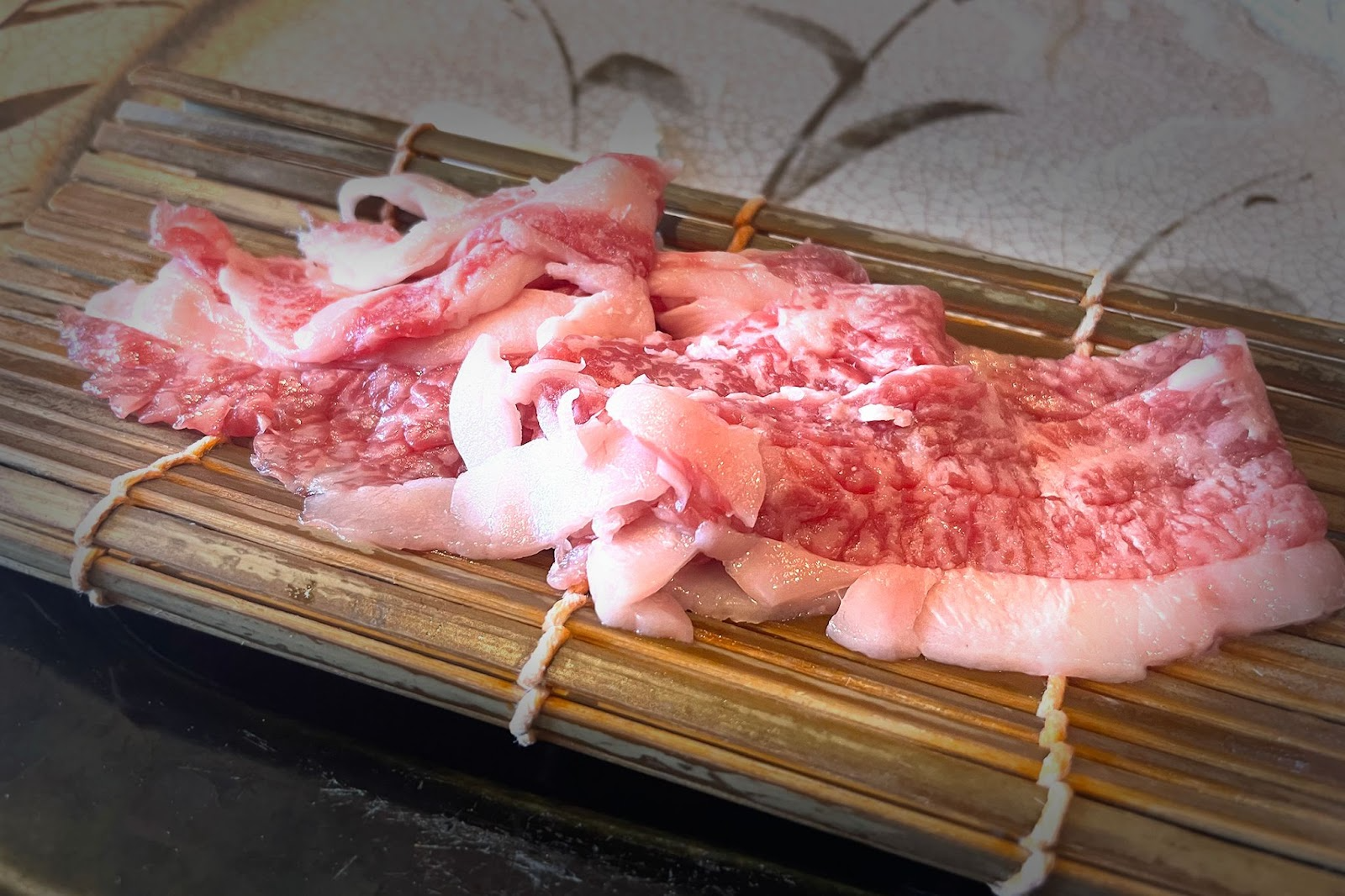Oirase Keiryū (Oirase Stream)—often called Oirase Gorge and frequently searched as “oirase gorge”—is a 14‑kilometer stream corridor in Aomori Prefecture where deep forest meets crystal‑clear water. Step into the national‑park forest that lines the stream between Lake Towada and Yakeyama and urban noise falls away; the murmur of water and the rustle of leaves wake your senses and help both mind and body reset.
If your days move at high velocity, this quiet, harmonious landscape becomes a consummate wellness retreat. Blending evidence‑informed nature therapy with moments that truly move you, Oirase Gorge (Oirase Keiryū) offers a singular journey of restoration.
Healing and Wellness Benefits of Oirase Gorge (Oirase Keiryū)
The Oirase Gorge corridor, where primeval beech forests intertwine with a lucid stream, offers profound restorative effects. Japan’s practice of shinrin‑yoku—forest bathing, the therapeutic act of spending time in the woods—has been shown to lower stress hormones and help rebalance the autonomic nervous system (*1).
Some research suggests that forest air contains higher concentrations of negative ions than city air, which may encourage a relaxed state (*2). Along Oirase Gorge, spray rising from waterfalls carries countless negative ions; coupled with crisp air, it invites deep, refreshing breaths.
This precious environment is protected with care. The Oirase area is designated both a Special Place of Scenic Beauty and a Natural Monument of Japan, helping steward its beech forests and waterfalls for generations to come (*3).
Sustainability initiatives are active across the region. Plans are underway to register Oirase and Lake Towada as a UNESCO Eco Park (Biosphere Reserve), with government and local communities working together to balance conservation with thoughtful tourism (*4).
The Power of Primeval Beech and Living Water
Centuries‑old beech trees line the Oirase path, their roots drawing from the glassy stream at their feet. This coupled ecosystem supports relaxation: in forest settings, the parasympathetic system tends to dominate, gently lowering heart rate and blood pressure (*1).
Walk the woods and you may feel tension lift, replaced by quiet vitality (*1). Phytoncides—aromatic compounds released by beech—together with the forest’s humid microclimate encourage deeper, more relaxed breathing that helps usher stress out of your system. Meanwhile, the stream’s soundscape steadies attention.
Flowing water functions like natural white noise; it can enhance focus and ease uneasy feelings. As sunlight dances across moss‑clad stones and the water’s surface, everyday fatigue often dissolves.

Air beside the stream is enriched with negative ions. Waterfalls and rapids generate fine droplets that are often negatively charged; these ions are believed to help regulate the autonomic nervous system and provide a refreshing lift (*2). In cities, positive ions tend to dominate, but amid Oirase’s water and greenery you can bathe in nature’s store of negative ions (*2). Let the beech‑canopy breeze and cool mist from plunge pools wash over you—you’ll feel the measured, science‑backed calm of “healing forests.”
UNESCO Eco Park Vision and Environmental Care
To keep Oirase’s healing power alive, conservation is essential. The area forms part of Towada‑Hachimantai National Park and is safeguarded by law as a national Special Place of Scenic Beauty and Natural Monument (*3).
At the same time, the region is pursuing registration as a UNESCO Biosphere Reserve (Eco Park), uniting around a shared commitment to harmonize environmental protection and a high‑quality visitor experience (*4). Traveling with this in mind renews a sense of gratitude and respect for the living landscape.
Mindful Activities That Draw on Oirase’s Natural Beauty
Along the Oirase Keiryū (Oirase Gorge), you can weave mindfulness into movement, syncing body and mind with the landscape. The riverside path is well maintained, and each season invites a different sensory meditation: the scent of new leaves in spring, the crunch of fallen foliage in autumn, the diamond‑clear air of winter. Simply walking here becomes a contemplative practice.

At Hoshino Resorts Oirase Keiryū Hotel, a guided “Stream Walk” slows the pace so you can immerse yourself in nature and gently release daily stress; it’s a beloved way to tune in to the present (*1).
Throughout the gorge, benches and small clearings near waterfalls offer quiet spaces to sit. Close your eyes, let the water provide your soundtrack, and you have a simple, approachable setting for reflective meditation—even if you’re new to mindfulness. Oirase’s forest is an “open‑to‑all healing field,” inviting you to settle in without pressure.
Meditation with the Rhythm of Water and Falls
The gorge’s many waterfalls are not only visually striking; they also sing with restorative sound. One highlight is Sōryū‑no‑Taki (“Twin Dragon” Falls), a seldom‑seen cascade of about 30 meters that splits into two plumes. Stand near the plunge pool and a fine mist cools your skin. Breathe slowly, listen to the thunder of the falls, add gentle stretches, and you’ll feel stress begin to unlock (*1).
As your breath falls into rhythm with the water, stray thoughts rinse away. The flow’s patterned cadence can steady brain waves, creating conditions for calm. This is nature’s own acoustic therapy—deeper and more resonant than a studio session in the city.
In quieter reaches, the stream’s delicate notes ring out, almost like a suikinkutsu (water‑harp). Focus on the droplets tapping from rock ledges; like the soft drip in a Zen hall, they pull you back to “this very moment.”
Drop your gaze to the rivulet at your feet and watch water meet stone and part again; your thoughts may begin to flow just as freely. Surrendering to the sound of Oirase is a small luxury only this place can offer.
Seasonal Practices to Balance Body and Mind
Oirase transforms with the seasons, and each stretch of the year suggests a different way to refresh.
Spring (April–May): Buds burst and the forest surges with new life. In Japan, it’s the start of the academic and fiscal year, a time of change that can tax the nervous system. A stroll beneath fresh green restores equilibrium. Breathe deeply amid a mosaic of more than a hundred tree species and you’ll feel energy returning from within.
Summer (June–August): The deep canopy softens the sun, turning the forest into a natural cooling chamber. Step off the road and the air turns deliciously cool; even at midday, perceived temperature can feel around 5°C lower (*2).

Autumn (October–November): This is Oirase at its most opulent. Beeches and maples blaze red and gold until the whole gorge gleams like brocade, often peaking from late October into early November. Walking through the foliage becomes a profound mindfulness practice. Attend to each leaf’s color and the gentle flutter of its fall and you’ll touch the Japanese aesthetic of shogyō mujō—the moving beauty of impermanence.
Winter (December–March): With fewer visitors, the valley settles into quiet mystery. Some paths close in deep cold, but winter reveals its own spectacles: frozen waterfalls (hyōbaku), rime‑crusted branches, and pristine snow. On snowshoe tours, the only sounds are your steps and your breath. As you tread the white path, stray thoughts drop away and you slip into a walking meditation. The cold air sharpens your focus, and you can thaw thoroughly afterward in a hot spring, letting the day’s exertion melt from your muscles.

Lodging Where Sustainability and Luxury Meet
A journey to Oirase is inseparable from where you stay; your inn becomes part of the wellness arc. In this region, high‑end retreats embrace sustainable architecture, uniting comfort with environmental care.
Zero‑Energy Design and Private Chef Dining
One such property on the slopes of Mount Hakkōda—Hakkoda Hotel—channels waste heat from its hot springs into underfloor heating, moving toward a near‑zero‑energy model (*1). With the exception of its foundation, the building is entirely timber‑framed, using natural materials to harmonize with the surrounding beech forest.
Wood‑warm guest rooms feel like an extension of the woods themselves. Dining is equally pleasurable and planet‑minded. Menus built around Aomori’s seasonal produce support local growers and reduce transport impact. One property even aims to source over half its ingredients within the prefecture, partnering with farmers and fisheries to build a regional supply chain.
Imagine the gentle flicker of a stove fire as you enjoy regionally inflected French cuisine or refined Buddhist‑style dishes—an experience that truly engages all five senses.

Carbon‑Neutral Mobility and Conscious Travel
Getting to and around Oirase can be just as considered. From Tokyo to Aomori, the Shinkansen (high‑speed rail) dramatically reduces CO₂ emissions compared with flying—by roughly one‑fifth per passenger‑kilometer—making it a smart, lower‑carbon choice (*2). If you rent a car, choosing an EV or hybrid further trims your footprint. The area has also piloted an electric micro‑bus called “Green Slow Mobility” (*3).
This quiet eight‑seater can be charged from a standard household outlet and travels up to 80 km on a single charge. Gliding along the stream at about 20 km/h, it invites you to open the windows and feel Oirase’s sounds, scents, and breezes up close. In winter, you can step out with a guide at scenic points to enjoy the frozen falls. It’s a new kind of “trekking bus tour,” offering the contemplative feel of a two‑hour hike—while still on wheels.
From lodging to transit, the Oirase journey pursues a thoughtful balance of sustainability and ease. To unwind in style while keeping your impact light—that’s the kind of intentional travel today’s discerning explorer embraces: high‑end ecotourism at its best.
Time in Oirase’s embrace becomes a dialogue with yourself and the planet. As a model of sustainable luxury travel, the region’s initiatives are drawing attention in Japan and beyond.
Nourishing Wellness Through Nature‑Driven Food
Your wellness journey in and around Oirase Gorge can be just as intentional at the table. Travel meals are a joy in themselves; by choosing options that are gentle on the body, you fold in shokuyōjō—healing through food. Fermented staples and circular use of local ingredients align beautifully with today’s wellness‑focused travel.
Fermented Foods and a Circular Local Supply Chain
Japanese cuisine brims with fermented all‑stars—miso, soy sauce, pickles, natto, amazake—that help keep your gut in balance. Lactic‑acid bacteria and kōji molds in these foods encourage beneficial bacteria to flourish and support a healthy microbiome (*1). The result can be smoother digestion, a more resilient immune system, and even brighter skin (*1).
Even when travel nudges your habits off‑track, you’ll find comforting local dishes around Oirase that thoughtfully incorporate ferments. Aomori’s pickles and hearty miso‑based stews, for example, soothe the spirit while supporting digestion. Even a simple bowl of miso soup at breakfast brings living cultures to help settle your stomach.
Sourcing locally is not only good for you; it’s good for the region. Shorter transport, fresher produce, and higher nutrient density make it a win‑win. On the operations side, properties are beginning to compost plate waste and return it to farm soils—closing the loop. Through circular supply chains, food becomes a bridge to coexisting with the land.
For extra gut care, look for fiber‑rich wild greens, heritage grains, and Aomori’s famed apples. Some inns also pour house‑made amazake or fruit‑vinegar tonics as easy, tasty “microbiome drinks.” Pleasure that’s also kind to the body elevates the whole trip.
Herbal Nightcaps and Amazake
In the evening, consider winding down with a traditional, low‑alcohol beverage. Aomori has a long history of herbal teas and liqueurs, now reimagined as gentle wellness nightcaps.
In the Tsugaru region, for instance, people have long sipped tea brewed from kuromoji (Lindera umbellata), a fragrant native shrub. Naturally caffeine‑free, kuromoji tea helps you relax and warms you from within, easing you toward sleep (*3). The essential oil linalool—also used in incense—has a calming effect and may soothe stress and digestion. A steaming cup before bed quiets the day.

Amazake, the rice‑kōji drink dubbed “a sip‑able IV” in Japan, is another lovely option. Rich in glucose, amino acids, and B vitamins, it’s linked to recovery and beauty benefits. Enjoyed warm before sleep, amazake has a relaxing effect that supports sound rest (*2). GABA and amino acids appear to gently stimulate the parasympathetic system, encouraging calm (*2). Naturally sweet without added sugar and with minimal alcohol, it’s well suited to nighttime.
Many inns in Aomori offer house amazake—kōji-based or sake‑lees‑based—sometimes with ginger or honey. Sipping it slowly while recalling the day’s scenes along the Oirase makes for a memorable close.
What and how you eat and drink are vital threads in your wellness tapestry here. By embracing fermented foods, herbal teas, and amazake, you can maintain balance even on the road. Tasting local food culture connects you more intimately with the region’s nature and traditions, enriching the journey.
Bringing the “Oirase Method” into Daily Life
The wellness methods you experience at Oirase don’t have to end when you head home. With a few small rituals, you can recreate that sense of calm and coherence in everyday life. Consider these “Oirase Method” self‑care ideas.
A Forest‑Bathing Routine at Home
You can re‑evoke the forest’s deep ease even in the city. Start by placing a few indoor plants where you work and unwind; greenery both relaxes a space and helps freshen the air while maintaining comfortable humidity.
Try diffusing essential oils from Japanese woods—hinoki cypress or hiba—to bring the forest’s aroma home. Research shows that the scent of hinoki leaves decreases cerebral blood flow and activates the parasympathetic nervous system, promoting relaxation (*1). Diffuse hinoki after a warm bath and your room will feel like a woodland retreat. Wood accents or an aroma block at your bedside can also help.
If you recorded the stream and wind at Oirase, play those tracks during downtime. Nature sounds are especially effective for deep relaxation—often more than synthetic ones. Even five minutes with eyes closed, attention resting on the forest’s sound, can reset a busy mind. If you don’t have your own recordings, seek out Oirase soundscapes on CDs or video platforms. You might also adopt a nearby park as your personal “micro‑forest” and walk it regularly.
Micro‑Zen with a Mobile Zazen App
Back in daily life, long meditation windows can be hard to find. A smartphone app can help. Several programs draw on Japanese Zen to guide authentic seated practice. The free app “Zen Oto (Zen Sound),” for example, supports both beginners and experienced practitioners (*2).
You can follow a temple‑supervised introduction to breathing, and set bells or mokugyō (wooden drum) as your session timer; the resonance of real field recordings—bells and wind—lands gently on the ear (*2). Sit quietly for even a few minutes each day and you’ll keep rekindling the contemplative awareness you felt at Oirase.

Global mindfulness apps and Japanese yoga‑studio guides are also at hand. The advantage is clear: you can “meditate anywhere, anytime,” using short pockets of time to center yourself.
The key is to hold on to that feeling of ease you found at Oirase and keep the practice small but steady. Even three minutes a day counts. With a daily check‑in, your inner axis wobbles less—even when stress rises.
Bringing Oirase‑learned self‑care into your routine gives your trip lasting value. It’s the first step toward a lifestyle aligned with nature—even in the heart of the city. With the forest’s aroma indoors, the stream’s murmur at your ear, and Oirase’s images in your mind, your own “little Oirase” stays alive within you, sustaining everyday wellness.
Closing
How does this Oirase Gorge wellness retreat feel to you? Here, the healing power of nature merges with gracefully designed experiences to nourish your hardworking body and mind with deep calm and renewed energy. Breathe in the negative ions of the beech forest, let the waterfalls’ voices carry you, and remember that you, too, are part of nature. Immerse yourself in the shifting beauty of each season and time slows; your senses sharpen.
Savor locally sourced cuisine at lodgings that are both luxurious and gentle on the environment, and you’ll feel restored from the inside out. Back home, weave in forest‑bathing elements and steady yourself with a Zen app so the insights and ease you found along the Oirase can keep enriching your days.
Oirase Keiryū is more than a destination; it’s a leader in sustainable wellness travel. From a journey that honors reverence and harmony with nature, you may find inspiration for your whole way of being. Treat yourself to a soul‑stirring stay along the Oirase Keiryū (Oirase Gorge)—and bring its essence into your everyday life as you step toward a truly well way of living.
Author Bio

Maoko Shibuya
Content Planner & Writer Holding a master’s in Digital Marketing and experience across global markets, Maoko blends international perspective with a deep appreciation for Japan’s cultural heritage. She plans and writes compelling narratives that reveal the country’s beauty and depth, drawing on her passion for travel, local cuisine, and cultural exploration.





.webp)